 The largest historical and cultural reserve in the territory of modern Turkmenistan is included into the List of the world heritage of UNESCO.
The largest historical and cultural reserve in the territory of modern Turkmenistan is included into the List of the world heritage of UNESCO.
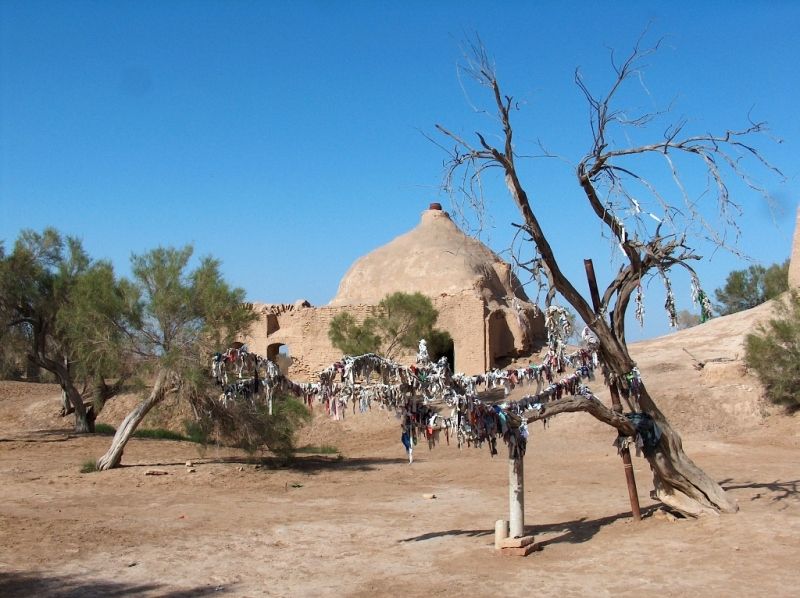
In the first centuries of Islam Merv was one of the most important centers of a Muslim civilization. Its blossoming is the share of the 11-12th centuries, time of board of a dynasty of the Great Seljuks whose empire stretched from a left bank of Amu Darya to Palestine. In those days it was one of the most beautiful cities of the East, and today – the archaeological park, largest in Central Asia, near the small town of Bayramali where unique mausoleums of soldiers of Islam and still esteemed shrines, numerous ruins of mosques, palaces and clay locks, caravanserais and markets, and also kilometers of powerful fortifications remained.

Merv is not only the name of one of the oldest Asian cities, but also to the whole surrounding neighborhood in the old Delta of the Murghab river. Since time immemorial, these lands attracted people with their fertility and abundance of water. In the bronze age fertile region, named after the country of Margush or Margiana, was inhabited by agricultural and semi-nomadic tribes, who created the unique culture of the ancient Oriental type. But on the plain, where four thousand years ago was boiling city life, and now extends to the Karakum desert and discovered by archaeologists of the twentieth century the ancient settlement slowly absorb the Sands, or align graders yesterday’s farmers, who are now unpunished aggressors of protected land, so tempting for a new irrigation system. So, in our eyes, goes the story, disappear her priceless evidence, often not even managed to become the property of science.
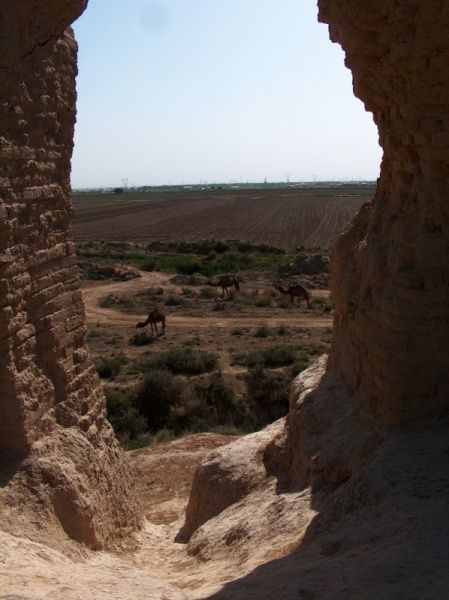
Against the backdrop of an extremely meager written tradition, when entire epochs have sunk into oblivion, leaving no memory of themselves, preserving the heritage of ancestors becomes a serious national problem in Turkmenistan. Ancient Merv, declared a state historical and cultural reserve as far back as 1988, and since 1999 included in the UNESCO World Heritage List, serves as an example of how monuments protection agencies try to resist the greed of entrepreneurs and the indifference of local authorities. With the support of international organizations and foreign research centers, Turkmen specialists carry out projects for the study and conservation of individual structures of antiquity and conduct systematic work on the formation of their social status. This routine, but necessary work has nothing to do with the official campaigns of recent years, such as the celebration of the 2500th anniversary of Merv, a fictional jubilee that was postponed, but never was.

This age of the city is nothing more than the vulgarization of history, which is especially characteristic of Soviet ideology and does not have a serious scientific basis. Neither archaeologists nor orientalist antiquaries will venture to say when the settlement originated in the place of Merv. There is indirect evidence that this happened around the 7th century BC, when the oases of the Bronze Age in the lower reaches of the Murgab delta, at the site of the present Erk-Kala hillfort that towers over the whole district, have long been abandoned.
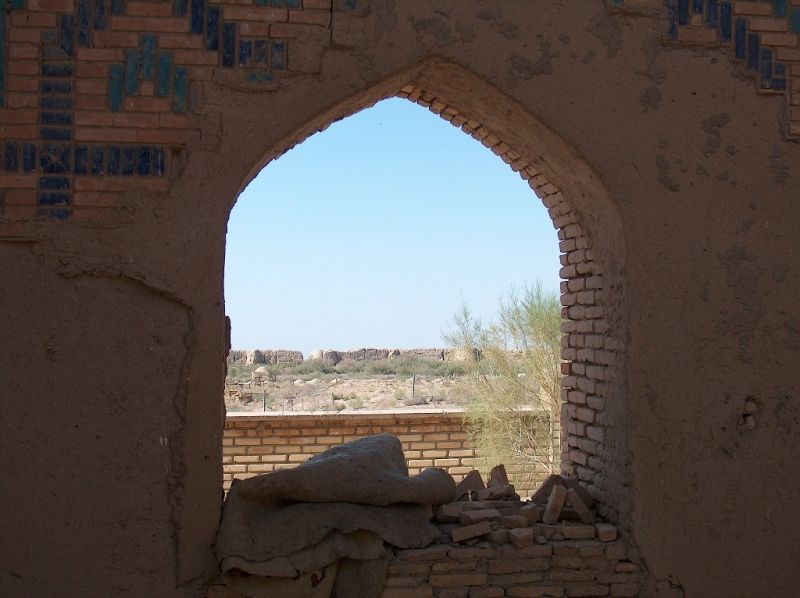
But then it was just one of the numerous settlements, far from being the largest and not the most important one. However, it was destined to become over time an important political center, which under the Achaemenids turned into a powerful stronghold, and after the campaign of Alexander the Great began to be called Alexandria Margiana.

Erk-kala is the most ancient core of Merv, representing in the plan an oval. Later, a square Hellenistic city was annexed to it – Antioch Margiana (now Gyaur-kala), developed together with Erk-Kala under the Parthians and Sassanids and accumulated a twelve-meter cultural layer! After the Arab conquest, even more to the west, but close to it grew the Sultan-kala – Merv of the Abbasid and Takhirid era, and in the mid-11th century – the Seljuk capital. At the beginning of the 15th century, when it was already uninhabited, the son of Tamerlane Shahrukh erected in two kilometers to the south the fortress of Abdullakhan-kala, to which at the end of the same century the last Merv fortress – Bayramalikhan-kala was built. That’s right, for the century, the stain of Merv’s building drifted after the outflowing water, leaving ruins almost nowhere covered by late layers, which greatly facilitates the work of archaeologists. But before this moving city wandered forever, becoming a museum-preserve, he experienced a stormy history of ups and downs of kingdoms and dynasties, countless wars and destruction, but at the same time creating and reviving life after acute social upheavals.
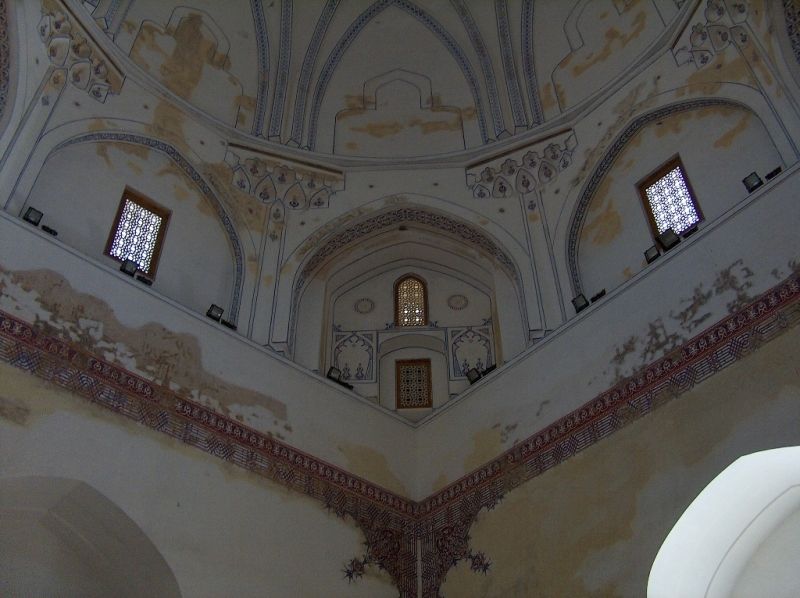
In the year 651, 19 years after the death of Prophet Muhammad, in a small village under Marv was killed Yazdegerd III, the last monarch of the Sassanid power. This date was a milestone, marking the conquest by the Arabs, Iran and Central Asia, as well as the beginning of the spread of Islam among the peoples of the region, informed followers of Zoroastrianism, Buddhism, Christianity, Manichaeism and the local forms of paganism. Immediately after the capture of Merv in the centre of the Gyaur-Kala was erected the mosque Ben-Mahan, who later became an integral part of the cult-memorial complex, which developed until the eleventh century. This place archaeologically documented masonry walls and the remains of a minaret, and pilasters of carved ganch with rich ornamentation that adorned the mihrab. When the first mosque became too small, put another at the gate on the Razik canal, and in the middle of the VIII century the following is still further West, on the channel mAh-jongg. By this time, Gyaur-Kala almost desolate in the policies of the Arabs, everywhere Vasilevich inhabitants of fortified shahristanov. The result has been to expand the rabad, which moved the main life of the city.
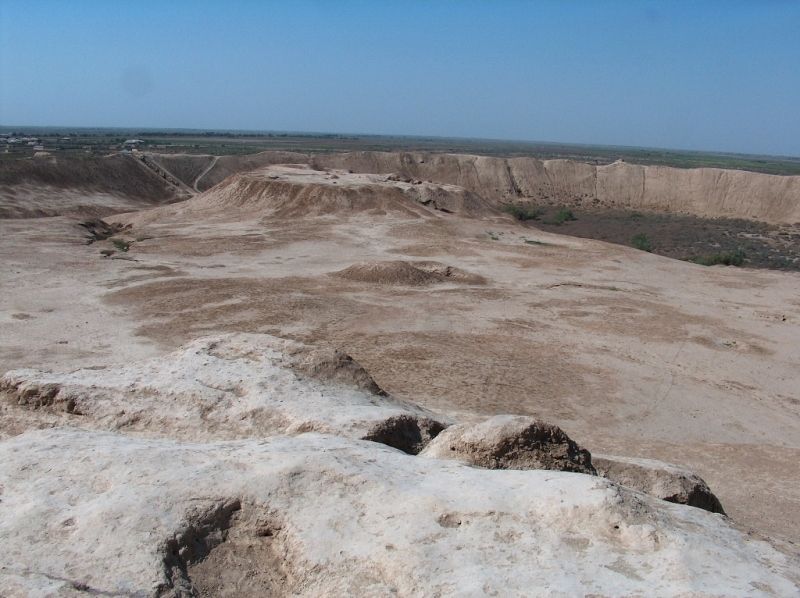
The center of the future brilliant Merv became a Western suburb of Gyaur-Kala. Laid his legendary Abu Muslim was the leader of the Abbasid movement in Khurasan, which in 748 led the supporters of the Abbasid Merv, to proclaim a new dynasty, soon defeated the Umayyads in the struggle for power in the Arab Caliphate. Settled in Merv, he moved the governmental residence of the old city of Gyaur-Kala, and built a new canal mAh-jongg – where later grew up the Sultan-Kala. The Palace of Abu Muslim, known as Dar-al-IMAR and built about 750 years, was a pretentious building, which, as described by the Arab geographer al-istakhri, who saw his half-century included audienc domed hall, four-Iwan and courtyard. This alloy Sasanian architectural forms (the dome and the Iwan) on century defined the character of Islamic architecture in this part of the world – not only civil, but a cult.
Despite the murder of Abu Muslim in 755, Merv remained the main political center for the entire Abbasid, or, as it was also called the Baghdad Caliphate, and even for a while became the de facto capital of the Islamic world.

It was at the beginning of the 9th century, after the Khurasan governor of Khalifat al-Mamun, the son of Caliph Harun al-Rashid, arrived here. In 813, al-Mamun himself became caliph, but long after that he lived in Merv, sending out from there all directions and appointments throughout the Arab state. At this time, Merv experienced a short but brilliant period in its history. There are no architectural monuments of the 9th century, but it is known that the mentioned mosque Benu Mahan was restored in the center of Gyaur-kala. A large underground water tank with a failed dome is the only landmark on which you can now find the former complex of this oldest mosque. Meanwhile, Merv, who was on the eastern outskirts of the Caliphate, was not very suited to the role of the imperial center, and al-Mamun moved to Baghdad, and the city again became the main center of the Khurasan province, where he was appointed governor – Tahir ibn Hussein . According to al-Istakhri, he wanted to move the center of Merv even further to the west and erected a number of buildings along the canal of Hurmuzfarra.
The first large structures, which are met today by visitors to the reserve, are mysterious clay castles-koshka Big and Malaya Kiz-kala with their severe rhythm of tightly pressed half-columns forming corrugated facades. There are various assumptions about the age of these gigantic dwellings. English researcher Hugh Kennedy recently substantiated the hypothesis that it could well have been Tahir’s buildings. And if the features of their designs and building materials can not serve as accurate indicators in this case, the presence of a mihrab in one of the premises of the Great Kyz-kala clearly indicates that the building was already under construction with the Arabs. Corrugated cats are typical for Central Asian architecture, there are many of them not only in Merv and its district, but also in Khorezm, they met in Bukhara and Termez, but they are completely absent in Iran. It is clear that this is a purely local architectural type that goes back to the pre-Islamic past and continued to be reproduced at least until the XII century, not only in raw brick, but also in burned wood; Rabat-i Malik, a steppe residence of the Karakhanids in the Bukhara oasis is a vivid example of this.
In the X-XI centuries the epoch of an unprecedented cultural upsurge came, when the best minds of the Muslim world, poets, artists and architects flocked to Merv, leaving their descendants with imperishable works. It is enough to name Omar Khayyam and Fahr ad-din Gurgani, the author of the romantic epic “Vis and Ramin”, who have lived here for many years, in which there are such lines about his architecture:
If the city charmed hearts,
Imagine the grandeur, the shine of the palace!
He glittered with paintings of walls and towers,
Chinese patterns decorated.
However, depending on the mood of the heroine of the poem, the perception of the city also changes:
Brazier this Merv, not the capital,
Not a city, but a deep dungeon.
Painted palace, the palace is priceless,
It seems to me fiery to be fiery.
Still, the love for the place where Gurgani spent many successful years as a poet at the court of the Seljuk sultan Togrulbek, caused him very different emotions:
Beautiful Merv, earthly lords shelter!
Merv is beautiful, where flower beds bloom!
Merv is beautiful in winter and in summer heat,
It is beautiful in autumn and in spring!
Who saw Merv, who settled in it,
Will happiness in the city be different?
(Translations by S. Lipkin)
Exactly one thousand years ago, Merv became the largest city in Central Asia and one of the largest in the entire Muslim East: together
With the suburbs its area reached 1800 hectares, and the population – 150 thousand people. Considering that most of the cities had from two to five thousand inhabitants at that time, one can imagine the scale of the Seljuk Merv. Literally on every kilometer here one can see this or that evidence of the distant past. Around metropolitan metropolis since Parthian times, there was a dense network of towns and separately standing rich estates. Sometimes it is not clear where the remnants of the city proper, and where there was a conglomeration of overgrown villages. In the tenth century, the townspeople made, by some estimates, about 40 percent of the total number of inhabitants of the oasis.
Under the sultan Melik Shah, at the end of the 11th century the raw wall of Rabad, the central square part of the Sultan-Kala, was erected or completely rebuilt. The wall was surrounded by a deep and wide ditch, and around the perimeter of the walls was located about two hundred semi-circular towers 4 m in diameter with two-tiered arched cameras for the riflemen. The walls reached a height of 10-12 meters with a width
6 meters; Inside there were casemates and secret staircases. Before the Mongol invasion, the slender walls and towers of the Sultan-kala were reinforced externally with thick cases of adobe brick. On two mutually intersecting axes were located the city gates – powerful structures of burnt bricks, pushed forward from the wall line. One of them – the gate of Firuz on the west side – is revealed by archaeologists. This is in many respects a unique fortification device with a labyrinth; Its gate part from the outside was decorated with a facing from a figured burnt bricks of eighteen kinds!
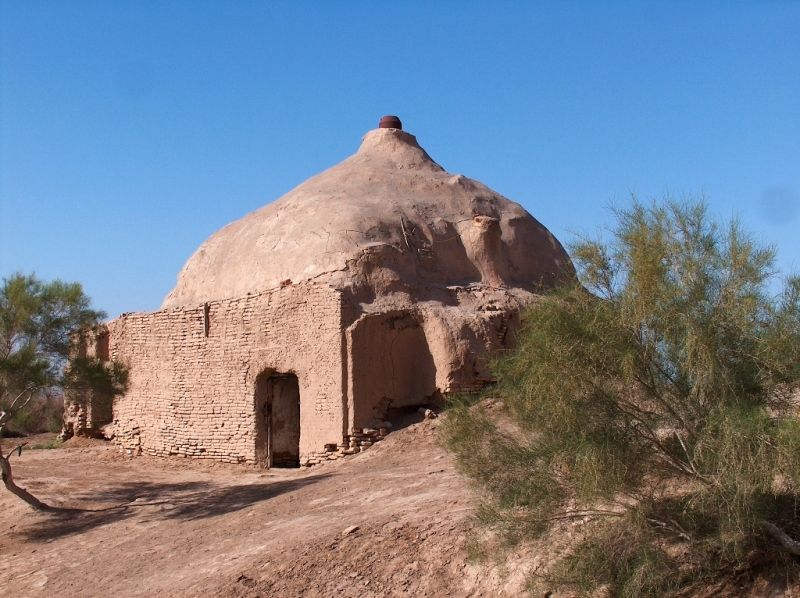
In the northeast corner of Sultan-kala there is Shahriyar-arch – a walled citadel of Seljuk Merv. In its northern part – the remains of raw walls and arches of the former barracks, and in the center – the so-called house of the ruler. It was a two-story building with a square, four-courtyard courtyard, built of raw materials and only on the facades lined with figured burnt bricks. In the neighborhood – the ruins of another raw monumental building, consisting of one elongated and tall hall, covered with a vault on the arches. Facades decorated
In the old traditions of corrugated locks-koshkov. Perhaps it was a sofa – the place where the state council was going. Among other raw monuments of the 11th-12th centuries, a country house is allocated 4 kilometers to the west of Sultan-kala. Its brutal forms, a composition of the same type of facades with slit-shaped loopholes and a planning structure with a central domed hall show the stability of the traditions of the castle architecture of the pre-Arab Merv.
Almost at the place where the palace of Abu Muslim was located, in the middle of the 12th century (no later than 1152) the mausoleum of Sultan Sanjar, the last ruler of the Great Seljuk dynasty, was erected. He was part of the ensemble of major royal buildings, towering in the center of Sultan-kala. Here there was a palace and a cathedral mosque, to which the mausoleum of Sanjar adjoined one of its facades. Many evidence points to its dominant role: “… above it rises a dome of blue color, which is visible at a distance of one day’s journey” (Yakut al-Hamavi, XIII century), “the largest building in the world” (Rashid al-din , XIV century).

“One of the greatest buildings of the kingdoms of the universe, so strong that damage may not touch it” (Istisare, XV century). And in the current state of the mausoleum of Sultan Sanjar is admired. It is a huge cube which is crowned by a dome of 17 meters in diameter. Exterior of the dome covered with tiles, has not survived, but was restored without a liner in 2004. The height of the dome space of the hall is 36 meters. In the top of the cube is located, a bypass gallery, identified on the facades rhythm openwork arched.
In the decoration of the gallery sets used shaped baked bricks and a layer of carved ganch with a stylized plant ornament and epigraphy. Interior design – murals made of blue and red on a white background. The arched design of the unloading device and the double shell dome of the mausoleum of Sanjar, a half century ahead of the ideas of the builders of the mausoleum Oljeitu-Khodabandeh in Soltanieh (Northwest of Iran) and 300 years – Filippo Brunelleschi, Creator of the famous dome of the Florence Cathedral.

The majestic tomb of Sultan stands alone among the desert landscape, where a dense network of urban quarters time literally razed to the ground. Only recently directly opposite the entrance to the mausoleum, archaeologists from the UK have begun to unearth the remains of a large Bazaar of Abu Muslim times, but known in medieval sources the Cathedral mosque with a minaret, the Sultan’s Palace, as well as other extraordinary buildings, including ten libraries, an astronomical Observatory, where he worked Omar Khayyam, is not even localized.
The high level architecture Merv says and the small memorial mosque of Mohammed Ibn Zeid, was built in the suburbs near the quarter of the potters in the years 1112-1113. The main facade of this symbolic building designed in the form of three arches with intermediate arched niches and frieze of horizontal panels over them. Carefully polished curved bricks and girih give it a rich patterned. In the interior the traces of ornamental painting, and brick Kufic inscription and a rare form of multiblade mihrab are covered with polychrome paintings. Stylistically close to him is another monument of the first quarter of the XII century, which is called, according to later tradition, Hudaynazar-ovliya. He also belongs to the category besporting centric mausoleums, the basis of the decor which are textured quality baked bricks.
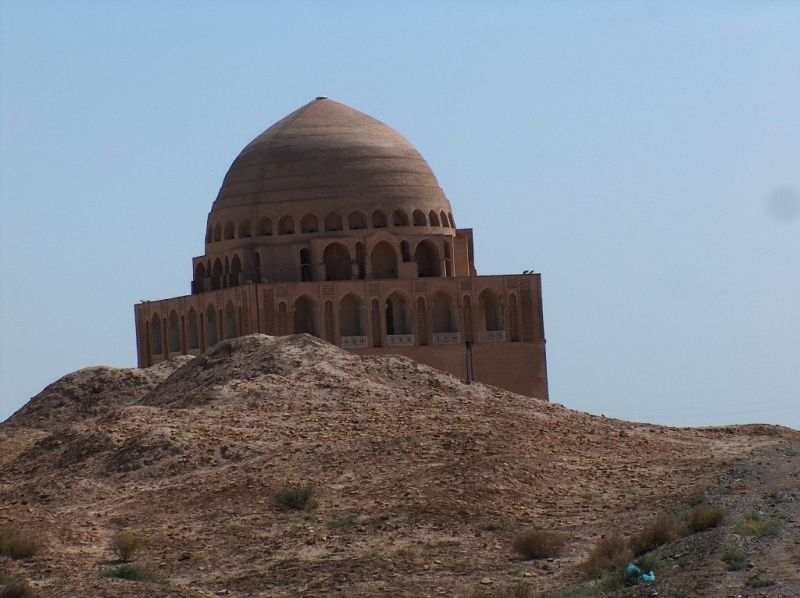
In 1153 Merv was captured by the nomadic husami and brutally looted. The onset of anarchy in the backdrop of the feudal wars for the possession of Khorasan, which lasted several decades, interrupted construction activity. Stepping into the part of the state Khorezm, the city was able to partially recover the damage, but in 1221, was completely destroyed by the Mongols. After almost 200 years, with Timurids was drawn, Merv revived, but to reach the previous level could not not only due to frequent political upheavals and natural factors. The climate became drier, pastures were exhausted, the Murghab became shallow, reduced acreage, and people began to leave their seats.
To the North of the ramparts of the Abdullakhan-Kala in the XV century was a charbagh – a huge Park with the summer residence of the ruler of Merv. The entrance is decorated arched gate, and strictly along the axis of the towered front Park pavilion. Merv is the only survivor of the ensemble of that period – the mausoleum of the companions, the companions of Prophet Muhammad (peace be upon him), buried in Merv in the VII century. Over their graves when Timurids was drawn was placed a marble slab with magnificent carved decoration and inscriptions, hidden domed kiosks, and behind, in the background, built two adjoining vaulted hall, lined with blue, and blue tiles. Them nothing – they only serve as a monumental backdrop for both graves. In the vicinity of the Abdullakhan-Kala you can see andany – a huge, almost raw conical domes placed on the ground. It was a public refrigerators in them year-round were kept tightly Packed in the winter the snow covered compacted layer of camel thorn trees.
It took several centuries before Merv reopened to the world, now thanks to travelers and scholars from Europe and Russia. The ancient city and its environs became the object of intense interest of Orientalists and archaeologists. The first one was thirty-two year old Professor at the faculty of Oriental languages of St. Petersburg University Valentin Zhukovsky, who in 1890 came to Merv on the instructions of the Imperial archaeological Commission. It is made the first truly scientific account of the history and study of the monuments in Mary oasis. His fundamental work, in due time awarded the gold medal of the Russian Academy of Sciences, still has not lost its practical value. In the autumn of 1890 Merv in the details recorded by the French photographer Paul Nadar, which is on the famous Orient Express left Paris and got here in only built railroad through Istanbul, Tbilisi, Baku, Krasnovodsk and Ashgabat. More than thousands of images are the result of travel, which combines the curiosity and skill of the person who is using a new form of transport and quality of photography in those years, first introduced in the West not available first images of the mysterious East. In 1904, Merv was visited by the American expedition of the Carnegie institution led by Professor Raphael pumpelly. And although his research at Gyaur-Kala was brief and episodic, it marks the beginning of the archaeological studies of the Murghab oasis.
In the twentieth century a great contribution to the study of the history and culture of Merv made an academician Vasily Bartold, Michael Masson, and headed from 1946 to 1986 the South-Turkmenistan archeological complex expedition (STACE). Several volumes of the papers of this mission are devoted to Merv, not to mention a number of monographs, scientific collections and articles about the monuments, many of which revealed and published it outagency. Finally, in 2001 by the international Merv project organized by the Institute of archaeology at University College London on the basis of the State historical and cultural reserve “Ancient Merv”. Dozens of young professionals from Turkmenistan, UK, Germany, Denmark, Iran, China, USA and other countries are here training, learning the wisdom of the profession, and develop their own research topics, extracting the material from the inexhaustible Treasury of Merv.
www.rgo-sib.ru
